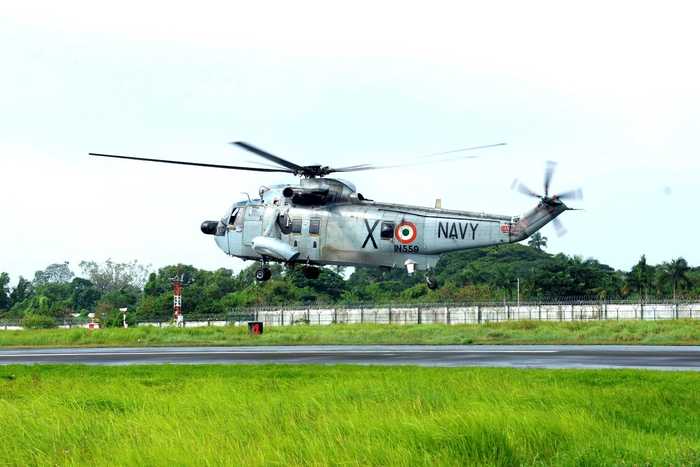Published 15:00 IST, November 21st 2023
Naval innovation soars as DRDO's indigenous Anti-ship missile nails guided flight trials
Indian Navy and the DRDO, achieved a milestone with successful trials of the indigenously developed NASM-SR, a helicopter-launched anti-ship missile.
- Defence
- 3 min read
In a groundbreaking development, the Indian Navy, in collaboration with the Defence Research and Development Organisation (DRDO), executed successful Guided Flight Trials of the first indigenously developed Naval Anti-Ship Missile (NASM–SR). The milestone was achieved on November 21, 2023, from the Seaking 42B helicopter, marking a crucial step toward attaining self-reliance in specialized missile technology, including seeker and guidance technologies.
The NASM–SR, or Naval Anti-Ship Missile–Short Range, emerges as a pioneering helicopter-launched anti-ship missile crafted by DRDO expressly for the Indian Navy. This signifies a significant stride in India's quest for indigenous air-launched anti-ship cruise missiles, amplifying the naval capabilities.
Revolutionizing naval arsenal: NASM-SR to replace Sea Eagle missile
Since the 1980s, the Indian Navy has deployed the Sea Eagle anti-ship missile on its Westland Sea King Mk42B multipurpose helicopter. However, the NASM-SR is envisioned as a successor, designed to overcome the limitations of the Sea Eagle, such as restricted flight range and increased take-off weight. The endeavor to develop NASM-SR was unveiled by the then Minister of Defence Nirmala Sitharaman in 2018, with a dedicated fund of ₹434.06 crore allocated in the same year.
The NASM-SR, with a range of 55 km and a capability of Mach 0.8, boasts an Imaging Infra-Red (IIR) seeker that is immune to jamming, a state-of-the-art navigation system, and integrated avionics. Its adaptability extends beyond helicopter launches, as it can be easily configured for deployment from ships and land-based vehicles. Speculations are rife about DRDO developing a long-range version tailored for attacking land targets.
Integration with MH-60R naval helicopters

With the Sea King helicopters being phased out, the NASM-SR is slated to be integrated into the Indian Navy's newly acquired MH-60R naval helicopters. The successful maiden test firing from a Sea King Mk42B helicopter on May 18, 2022, demonstrated the missile's sea-skimming capability. Operating at a mere 5 meters above sea level, the NASM-SR approached the target with exceptional precision, validating its control, guidance, and mission algorithms. This achievement marks a paradigm shift in India's naval capabilities, showcasing technological prowess and a stride toward self-sufficiency in advanced missile technology.
After the Indo-Pakistani War of 1965, Pakistan heavily invested in modern submarines and long-range torpedoes. In response, India procured six Westland Sea Kings from Britain in 1969 for Anti-Submarine Warfare (ASW) duties, designated as Mk42. This acquisition included air-droppable homing torpedoes to counter submarines. The delivery of these helicopters began a few months before the Indo-Pakistani War of 1971. However, due to training limitations, Sea King operations were initially restricted during the conflict. By November 1971, increased aircrew experience allowed for offensive anti-submarine operations. Additionally, the INS Vikrant, a Majestic-class aircraft carrier, underwent refitting between 1972 and 1974 to facilitate extensive Sea King operations, making it the carrier's primary anti-submarine aircraft.
Updated 15:00 IST, November 21st 2023